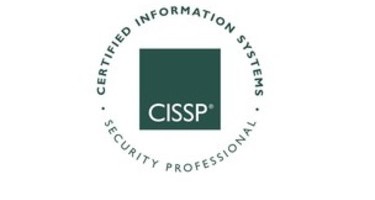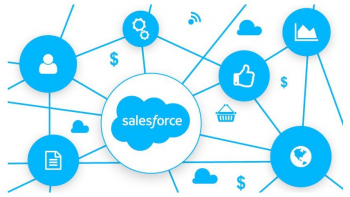Certified Information Systems Security Professional – CISSP

In today fast evolving times technological solutions by itself cannot protect an organizations important information assets. So, Employers demanding qualified information security staff give their organizations a leading edge by providing the highest standard of security for their customers, employees, stakeholders and organizational information assets..
The CISSP is an internationally recognized certification for information security professionals. Offered by the International Information Systems Security Certification Consortium, (ISC)2, the CISSP certification is both an objective measure of excellence and a globally recognized standard of achievement.
Benefits of the CISSP Certification for Professionals
- Indicates a working knowledge of information security
- Commitment to profession
- Provides a career distinction, with enhanced credibility and marketability
- Has exclusive benefits as an (ISC)² member, including valuable resources such as peer networking and idea exchange
- Certified information security professionals earn more than their non-certified counterparts, according to the Global Information Security Workforce Study
- Satisfies the government and organization requirements for information security certification mandates
What are the requirements?
- 2 years of experiences in security
What am I going to get from this course?
- Clear CISSP Exam
- Analyze information systems access control.
- Analyze security architecture and design
- Analyze network security systems and telecommunications.
- Analyze information security classification and program development.
- Analyze risk management criteria and ethical codes of conduct.
- Analyze cryptography characteristics and elements.
- Analyze physical security.
- Analyze operations security.
- Apply Business Continuity and Disaster Recovery Plans.
- Analyze software development security.
- Identify legal issues, regulations, compliance standards, and investigation practices relating to information systems security.
What is the target audience?
- IT security-related practitione
- Security Administrators
- Auditors
- Network analysts
- Security analysts
- Information Security officer (ISO)
- Consultants
- Security Instructors
Frequently Asked Questions
What web browser should I use?
The EnlightMe platform works best with current versions of Chrome, Firefox or Safari, or with Internet Explorer version 9 and above.
Course Staff

Mohamed Atef
Certified Instructor with more than 15 years of experience.
ICT Consultant and certified instructor with more than 20 years of experience deliver professional and academic courses and 2 books published.
Certified Information System Security Professional (CISSP) ID #517943
Microsoft Certified Trainer (MCT) ID #3022752
EC Council Certified Instructor (CEI) ID #ECC51750391761
CEH: Certified Ethical Hacking ID #ECC64515022319
Certified Cisco System Instructor (CCSI)
Microsoft Certified System Engineer (MCSE)
Microsoft Certified IT Professional (Windows Server Administration 2008)
CompTIA Certified (Network +) ID #
CompTIA Certified (Server +)
CompTIA Certified (Linux +)
CompTIA Certified (Security +)
Cisco Certified Network Associate (CCNA) ID #CSCO11273248
Cisco Certified Network Professional (CCNP)
Project Management Professional (PMP) ID #1772374
Course Features
- Lectures 68
- Quizzes 0
- Duration 4 Hours/Week
- Skill level
- Language English
- Students 1
- Certificate No
- Assessments Self
-
Section 1: Introduction
- Lecture 1.1 Lecture 1 Course Objective Locked
- Lecture 1.2 Lecture 2 Course Roadmap Locked
- Lecture 1.3 Lecture 3 CISSP 3rd vs CISSP 4th Locked
-
Section 2: Information Systems Access Control
- Lecture 2.1 Lecture 4 Important Websites and Course Material Locked
- Lecture 2.2 Lecture 5 Introduction Locked
- Lecture 2.3 Lecture 6 Authorization Locked
- Lecture 2.4 Lecture 7 Authentication Locked
- Lecture 2.5 Lecture 8 Single Sign On SSO Locked
- Lecture 2.6 Lecture 9 Central Administration (RADUIS) Locked
- Lecture 2.7 Lecture 10 Access Control Attack Locked
- Lecture 2.8 Lecture 11 Intrusion Detection Systems Locked
- Lecture 2.9 Lecture 12 Penetration Testing Locked
- Lecture 2.10 Lecture 13 Acces Control Important area for the exam Locked
- Lecture 2.11 Lecture 14:Access Control Questions Locked
-
Section 3: Security Architecture and Design
- Lecture 3.1 Lecture 15 Common Security Architecture Frameworks Locked
- Lecture 3.2 Lecture 16 Trusted Computing Base Locked
- Lecture 3.3 Lecture 17 Security Models Locked
- Lecture 3.4 Lecture 18 TCB Vulnerabilities Locked
- Lecture 3.5 Lecture 19 Security Mode Types Locked
- Lecture 3.6 Lecture 20 TCSEC Locked
- Lecture 3.7 Lecture 21 Information Systems Security Standards Locked
- Lecture 3.8 Lecture 22 Security Architecture Questions Locked
-
Section 4: Network and Telecommunications Security
- Lecture 4.1 Lecture 23 The OSI Model Locked
- Lecture 4.2 Lecture 24 TCP/IP Model Locked
- Lecture 4.3 Lecture 25 Network Architecture Components Locked
- Lecture 4.4 Lecture 26 Firewall Locked
- Lecture 4.5 Lecture 27 Network Types and Topolgies Locked
- Lecture 4.6 Lecture 28 Remote Access Technology Locked
- Lecture 4.7 Lecture 29 Wireless Network Locked
- Lecture 4.8 Lecture 30 Network Attacks Locked
- Lecture 4.9 Lecture 31 Remote Access Security Mechanisms Locked
- Lecture 4.10 Lecture 32 RAID Locked
- Lecture 4.11 Lecture 33 Backup Locked
- Lecture 4.12 Lecture 34 Network Questions Locked
-
Section 5: Information Security Classification and Program Development
- Lecture 5.1 Lecture 35 Classification Schemes Locked
- Lecture 5.2 Lecture 36 Security Document Types Locked
- Lecture 5.3 Lecture 37 Security Awareness and Training Locked
-
Section 6: Risk Management and Ethics
- Lecture 6.1 Lecture 38 What is a Risk ? Locked
- Lecture 6.2 Lecture 39 Asset Evaluation Locked
- Lecture 6.3 Lecture 40 Ethics Issues in a Computing Environment Locked
-
Section 7: Cryptography
- Lecture 7.1 Lecture 41 Cryptography Locked
- Lecture 7.2 Lecture 42 Alternative Ciphers Locked
- Lecture 7.3 Lecture 43 Symmetric Encryption Locked
- Lecture 7.4 Lecture 44 Asymmetric Encryption Locked
- Lecture 7.5 Lecture 45 Hashing Locked
-
Section 8: Physical Security
- Lecture 8.1 Lecture 46 What Is Physical Security? Locked
- Lecture 8.2 Lecture 47 Physical Access Barriers Locked
- Lecture 8.3 Lecture 48 Power Issues Locked
- Lecture 8.4 Lecture 49 Fire Locked
-
Section 9: Operations Security
- Lecture 9.1 Lecture 50 Operations Security Locked
- Lecture 9.2 Lecture 51 Operations Security Control Methods Locked
-
Section 10: Business Continuity and Disaster Recovery Planning
- Lecture 10.1 Lecture 52 Business Continuity Plans Locked
- Lecture 10.2 Lecture 53 Business Impact Analysis Locked
- Lecture 10.3 Lecture 54 MTD/RTO/RPO Locked
- Lecture 10.4 Lecture 55 Disaster Recovery Plans Locked
- Lecture 10.5 Lecture 56 Alternate Sites Locked
-
Section 11: Legal, Regulations, Compliance, and Investigations
- Lecture 11.1 Lecture 57 Types of Law Locked
- Lecture 11.2 Lecture 58 Liability Locked
-
Section 12: Application Security
- Lecture 12.1 Lecture 59 The System Life Cycle Locked
- Lecture 12.2 Lecture 60 Software Escrow Locked
- Lecture 12.3 Lecture 61 Software Development Methods Locked
- Lecture 12.4 Lecture 62 The Change Control Process Locked
- Lecture 12.5 Lecture 63 Security Consideration Locked
- Lecture 12.6 Lecture 64 What is SQL Injection ? Locked
- Lecture 12.7 Lecture 65 SQL Injection attack Locked
- Lecture 12.8 Lecture 66 Software Control Locked
-
Section 13: Difference between Third Edition and Fourth Editiom
- Lecture 13.1 Lecture 67 Difference between Third Edition and Fourth Editiom Locked
-
Section 14: Are you ready for the exam?
- Lecture 14.1 Lecture 68 Are you ready for the exam ? Locked











